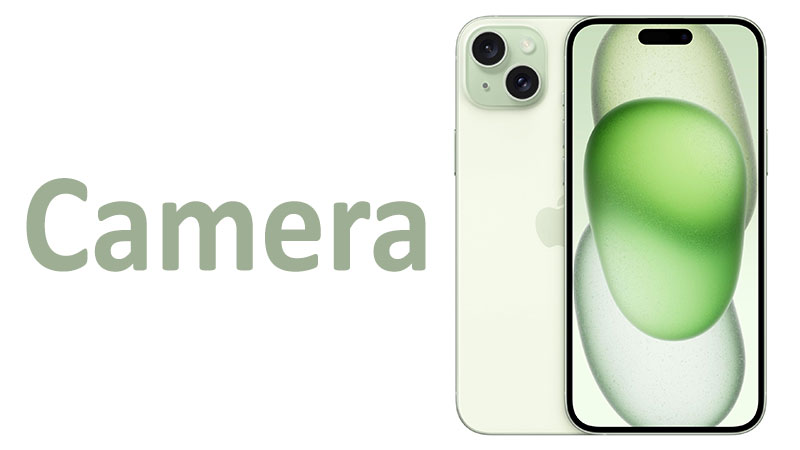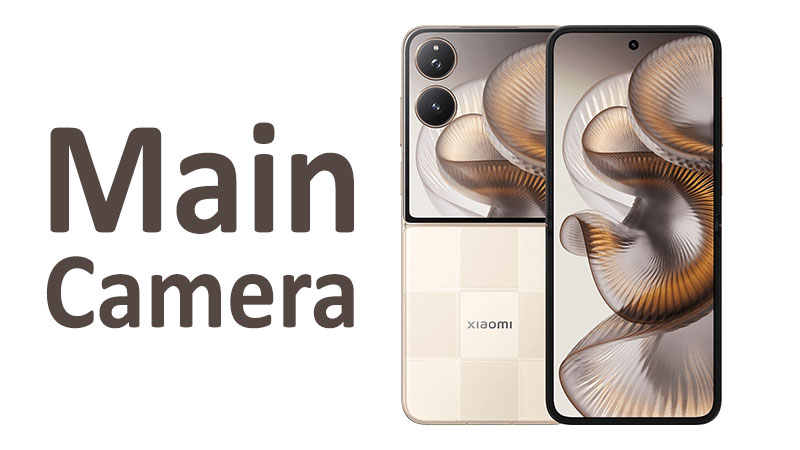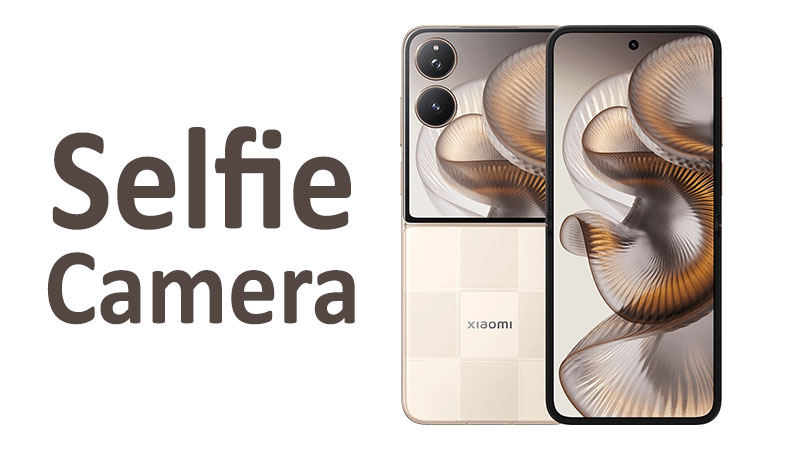Apple iPhone 15 Plus camera is arguably the biggest generational leap for the non-Pro lineup in years. This comprehensive review examines the specifications and real-world performance of the dual-camera system. We will explore how Apple leveraged computational photography and new hardware. This article is your essential guide. It covers everything from the new 48MP main sensor to its stunning video capabilities. We will help you understand the impact of these upgrades on everyday photography. This deep dive is perfect for prospective buyers and technology enthusiasts alike. The iPhone 15 Plus offers exceptional photographic power for its price segment. This review will cover every detail you need to know about its performance.
The Massive Upgrade: 48MP Main Sensor Details
The centerpiece of the iPhone 15 Plus camera system is the new 48MP main sensor. This is a significant step up from the previous 12MP sensor. This camera provides incredible detail and flexibility. It delivers impressive performance in various lighting conditions. Understanding the technical specifications is key to appreciating its power.
Deep Dive into the Main Camera Specs
The iPhone 15 Plus uses a dual-camera arrangement. Its primary component is the 48 MP wide sensor. It features an f/1.6 aperture lens. This wide aperture allows more light to reach the sensor. The sensor size is substantial at 1/1.56 inches. It features 1.0µm pixels. This combination captures a greater volume of light data.
Crucially, it includes dual pixel PDAF. This ensures fast and accurate autofocus. It also boasts Apple’s sensor-shift optical image stabilization (OIS). Sensor-shift OIS moves the sensor itself to counteract shake. This results in dramatically sharper photos and smoother videos. The effective focal length is 26mm. This is a classic wide-angle perspective perfect for diverse scenes.
How the 48MP Sensor Delivers 24MP Photos
The 48-megapixel sensor uses a process called pixel binning. It combines four pixels into one large super-pixel. This process typically results in a brighter 12MP image. The iPhone 15 Plus, however, uses the full 48MP image data differently. It uses a new default output of 24MP images.
This 24MP resolution is a perfect balance. It retains twice the detail of the older 12MP system. Simultaneously, it maintains a manageable file size. This strikes an excellent compromise for most users. This feature is a game-changer for everyday mobile photography. You get higher quality without sacrificing storage too quickly.
Specialized Comparison: iPhone 15 Plus vs. iPhone 14 Plus
The move to 48MP on the iPhone 15 Plus is momentous. The previous iPhone 14 Plus used a 12MP main sensor. That older sensor had an f/1.5 aperture. The sensor size was similar at 1/1.9 inches. However, the new camera captures four times the raw data.
The 15 Plus offers superior light gathering capability. This dramatically improves low-light and indoor photography. The new 24MP output resolution is also a major difference. It gives users significantly more detail to work with. The older model could not compete with this clarity and resolution. This single hardware change makes the upgrade worthwhile for photo enthusiasts.
The Versatile Ultra-Wide and New Zoom Options
The dual-camera system is made complete by a high-quality Ultra Wide lens. Furthermore, the high resolution of the main sensor unlocks new zoom capabilities. These features enhance the iPhone 15 Plus photography versatility. You can capture sweeping landscapes and detailed distant subjects.
The 12MP Ultra-Wide Camera
The iPhone 15 Plus includes a reliable 12 MP Ultra Wide camera. It features an f/2.4 aperture. The field of view is a sweeping 120˚. This lens is perfect for capturing broad scenes. It excels at architectural shots and large group photos. The effective focal length is 13mm.
This Ultra Wide sensor retains the 0.7µm pixel size. It offers solid performance in good lighting. Compared to the main camera, it is less effective in darkness. However, the overall color science remains consistent. Apple ensures a seamless transition between the two lenses. This is a key benefit of the iPhone ecosystem.
Introducing the 2x Telephoto Option
The iPhone 15 Plus does not have a dedicated telephoto lens. Nevertheless, the 48MP sensor effectively creates a 2x telephoto option. The camera crops into the center of the full 48MP image. It captures a high-quality 12MP image. This is equivalent to a 52mm focal length.
This is a massive functional improvement. It provides three optical-quality zoom steps. Users can switch between 0.5x, 1x, and 2x. This level of versatility was previously exclusive to the Pro models. The 2x zoom is excellent for portraits and detail shots. It is a genuine zoom option, not just a simple digital crop.
Specialized Comparison: Android Competitor Cameras
Many competitor phones offer dedicated telephoto lenses. For instance, the Samsung Galaxy S-series often features 3x or 10x optical zoom. The iPhone 15 Plus achieves its 2x zoom digitally. It does this by leveraging its high-resolution sensor.
While the dedicated telephoto lenses offer superior reach, Apple’s 2x option is strong. It delivers excellent image quality and clarity. Its reliance on the large main sensor ensures great low-light performance at 2x. This is often an advantage over smaller, dedicated telephoto sensors on competitors. Apple focuses on quality at common focal lengths.
Computational Photography and Key Features
Apple’s prowess in computational photography is a major selling point. The iPhone 15 Plus uses advanced software processing. This software maximizes image quality from the new hardware. Features like the Photonic Engine and improved HDR are essential. They ensure consistent and stunning results for all users.
The Power of the Photonic Engine
The Photonic Engine is central to the iPhone 15 Plus’s performance. It integrates the Deep Fusion and Smart HDR systems. It applies these processes earlier in the imaging pipeline. This happens before the image is compressed. The engine merges the best pixels from multiple exposures.
This leads to brighter, more detailed images. Colors are richer and more accurate. The engine significantly improves mid-to-low-light shots. It provides better texture, color, and detail than previous generations. The Photonic Engine works automatically in the background. Users benefit from enhanced images with every tap of the shutter.
Enhanced Portrait Mode and Depth Control
Portrait mode has received notable improvements on the iPhone 15 Plus. The camera now captures depth information automatically. This happens even when not actively shooting in Portrait mode. If a person or pet is in the frame, depth data is stored.
Users can later turn a standard photo into a portrait photo. This is a powerful editing capability. You can also adjust the focus point and depth of field after the fact. This offers tremendous flexibility in post-production. It elevates the quality of casual portrait shots.
Dynamic Range and Smart HDR
The iPhone 15 Plus supports next-generation Smart HDR. This feature captures highlights and shadows with incredible accuracy. It uses more advanced algorithms than ever before. This preserves detail in the brightest and darkest areas of a photo.
Images exhibit a highly dynamic range. They look lifelike and natural. The tone mapping is superior across the board. This ensures colors look vibrant without appearing oversaturated. The results are consistently excellent, even in challenging, high-contrast scenes. This is a crucial element of the iPhone 15 Plus camera performance.
Video Recording Excellence: Specs and Capabilities
Apple continues to lead the industry in mobile video recording. The iPhone 15 Plus offers cinema-grade video quality. Its advanced stabilization and HDR support are exceptional. This makes it a fantastic tool for content creators and casual users alike.
Detailed Video Recording Specifications
The iPhone 15 Plus is a true powerhouse for videography. It supports 4K resolution video at up to 60 frames per second (fps). Users can choose rates like 24, 25, 30, and 60fps. This provides flexibility for various cinematic looks. Full HD 1080p recording is available up to 240fps. This enables super slow-motion capture.
Crucially, the phone supports HDR video recording. It utilizes Dolby Vision HDR at up to 60fps. Dolby Vision provides a massive increase in color and contrast information. This results in stunningly vivid and realistic video footage. The phone also captures stereo sound during recording. This ensures high-quality audio accompanies the visuals.
Advanced Stabilization Features
The sensor-shift OIS is incredibly effective for video capture. It provides smooth, stable footage, even when moving. This is especially noticeable during hand-held recording. The phone also uses gyro-EIS (electronic image stabilization).
Together, OIS and EIS work in concert. They deliver stable results that often eliminate the need for a physical gimbal. This is a massive benefit for creators on the go. Action Mode is also available. This mode provides even more extreme stabilization for highly dynamic shooting.
Specialized Comparison: Video vs. Previous Model
Compared to the iPhone 14 Plus, the video hardware is similar. However, the image processing is better. The larger main sensor improves video quality in low light. This reduces digital noise and enhances clarity.
Both phones support Dolby Vision HDR. However, the 15 Plus benefits from better processing. The color grading and noise reduction look cleaner. The superior stabilization is also more effective on the new model. The iPhone 15 Plus provides a slight but meaningful edge in video performance.
The Capable Selfie Camera System
The front-facing camera on the iPhone 15 Plus is often overlooked. However, it is a highly capable system. It is designed for excellent photos, video calls, and advanced biometrics. It contributes significantly to the overall user experience.
Front Camera Specifications
The selfie camera features a 12 MP sensor. It has a fast f/1.9 aperture. The lens provides a wide 23mm equivalent field of view. The sensor size is approximately 1/3.6 inches. This camera includes Phase Detection Autofocus (PDAF).
This is a critical feature. It ensures that selfies are always sharply focused. The camera also works in conjunction with the SL 3D sensor. This sensor is used for depth and biometrics (Face ID). It enhances the quality of front-facing portrait shots.
Front Camera Features and Video
The front camera supports HDR and Dolby Vision HDR video. It can record 4K video at up to 60fps. This matches the maximum resolution of the rear cameras. This is excellent for high-quality vlogging or video conferencing. The camera also uses gyro-EIS for video stabilization. This ensures steady, professional-looking self-recorded footage.
The combination of PDAF and high-resolution video is powerful. It guarantees clear, crisp, and well-lit selfies and videos. The f/1.9 aperture is fast. This helps the camera perform well in dimmer environments. The image quality is consistently impressive.
Pros and Cons of the iPhone 15 Plus Camera System
Choosing a smartphone often comes down to weighing the benefits against the drawbacks. The iPhone 15 Plus offers a strong camera package. However, it is not without a few limitations compared to the high-end Pro models. Understanding these points is crucial.
Pros: Significant Advantages for Photographers
The new 48MP main sensor is the biggest advantage. It delivers significantly more detail than before. The 24MP default photo resolution is an excellent upgrade. It provides superb clarity and flexibility. Sensor-shift OIS ensures ultra-stable photos and videos. This is crucial for sharp, clear results.
The new 2x telephoto option is a genuine optical-quality zoom. It greatly enhances the phone’s versatility. Video recording is industry-leading. It includes 4K at 60fps with Dolby Vision HDR support. Computational photography is powerful. The Photonic Engine creates consistently brilliant images automatically. The front camera includes PDAF. This ensures perfectly focused selfies every time. The overall color science across all lenses is highly consistent. This simplifies post-production and editing.
Cons: Areas Where the Camera Falls Short
The iPhone 15 Plus lacks a true, dedicated telephoto lens. The 2x zoom is excellent but is still a digital crop. It cannot compete with the 3x or 5x optical lenses on Pro models. The Ultra Wide camera did not receive a major sensor upgrade. Its low-light performance lags behind the main 48MP sensor.
The camera system does not support Pro features like ProRAW. It also misses out on ProRes video recording. These formats are highly valuable for professional creators. They are exclusive to the iPhone 15 Pro series. Some Android competitors offer macro mode. The iPhone 15 Plus lacks this dedicated close-up feature.
Important Points for the Buyer or Reader
The Apple iPhone 15 Plus camera system is a powerhouse. However, buyers should consider their specific needs. It is important to know where this camera excels. Buyers should also understand where the Pro model differs. These insights will ensure you make the best purchase decision.
Prioritize Performance Over Pro Features
The iPhone 15 Plus camera is fantastic for 99% of users. It excels at travel photography and family events. Its default 24MP image quality is superb. The video quality is unmatched by most competitors.
You should choose the 15 Plus if you value simple, high-quality output. It provides excellent point-and-shoot performance. Do not worry about ProRAW or ProRes unless you are a professional videographer. These features require significant storage space and advanced editing skills.
Understanding the 2x Zoom
The 2x telephoto option is a key selling point. It is not an optical zoom lens itself. Instead, it leverages the main sensor’s resolution. The resulting images are outstandingly detailed. They are significantly better than a simple digital zoom.
This feature adds practical framing options. It is perfect for portraits and separating a subject from the background. This 2x capability makes the camera much more versatile. It provides a significant advantage over the older iPhone 14 Plus.
Low-Light Capabilities
The new, larger sensor greatly improves low-light performance. The faster f/1.6 aperture helps immensely. Sensor-shift OIS keeps the shutter open longer without blurring. The Photonic Engine combines exposures efficiently.
Night mode shots are brighter and clearer. They retain better texture and detail than previous generations. This makes the iPhone 15 Plus a reliable camera for evening photography. It performs well in dimly lit restaurants and night cityscapes.
Storage Considerations
The new 24MP HEIF and JPEG files are larger than the old 12MP files. Users who take many photos will fill their storage faster. Additionally, 4K 60fps Dolby Vision video consumes significant space.
Buyers should consider a storage option larger than the base model. This is especially true if you plan to shoot a lot of high-resolution video. Managing storage will be more critical with the 15 Plus camera.
Conclusion: Making Your Informed Decision
The Apple iPhone 15 Plus camera represents a monumental leap forward. The introduction of the 48MP main sensor is transformative. It fundamentally changes the mid-range iPhone photography experience. The camera now delivers highly detailed 24MP photos by default. It also unlocks a powerful 2x optical-quality zoom.
This combination of hardware and computational prowess is compelling. Video capabilities remain best-in-class. They include 4K 60fps with exceptional Dolby Vision HDR. The sensor-shift OIS provides unmatched stability for both stills and video. The Ultra Wide and Selfie cameras complete a well-rounded package. They ensure color consistency and quality across all focal lengths.
The iPhone 15 Plus is an outstanding choice. It is ideal for users seeking top-tier image quality. It is great for those who do not require professional-grade features. It offers superior image quality to the iPhone 14 Plus. It holds its own against flagship Android competitors. The camera system is easy to use and provides stunning results consistently. For most people, the iPhone 15 Plus is the perfect balance of price, performance, and camera capability. It is a fantastic investment in mobile photography.
FAQ
What is the primary difference between the iPhone 15 Plus and 14 Plus cameras?
The main difference is the primary sensor. The iPhone 15 Plus features a new 48MP main sensor. The iPhone 14 Plus used a 12MP main sensor. The 48MP sensor captures much more light and detail. It also allows for the new 2x telephoto option.
Does the iPhone 15 Plus have a dedicated optical zoom lens?
No, the iPhone 15 Plus does not have a dedicated optical zoom lens. It uses the center of the 48MP main sensor. This creates an optical-quality 2x zoom option. This is a very effective solution for achieving zoom without a separate lens.
What is the highest resolution video the iPhone 15 Plus can record?
The iPhone 15 Plus can record 4K resolution video. It can achieve this at up to 60 frames per second. It supports industry-leading Dolby Vision HDR recording at this quality. This is excellent for creating high dynamic range content.
What is the benefit of the 24MP default photo output?
The 24MP default output provides richer detail. It has twice the resolution of the former 12MP images. Yet, it maintains a smaller file size than the full 48MP file. This is an ideal compromise for everyday shooting and social sharing.
Is the iPhone 15 Plus selfie camera capable of autofocus?
Yes, the 12MP selfie camera on the iPhone 15 Plus is capable of autofocus. It uses Phase Detection Autofocus, or PDAF. This ensures that all your selfies are sharp and perfectly focused.



